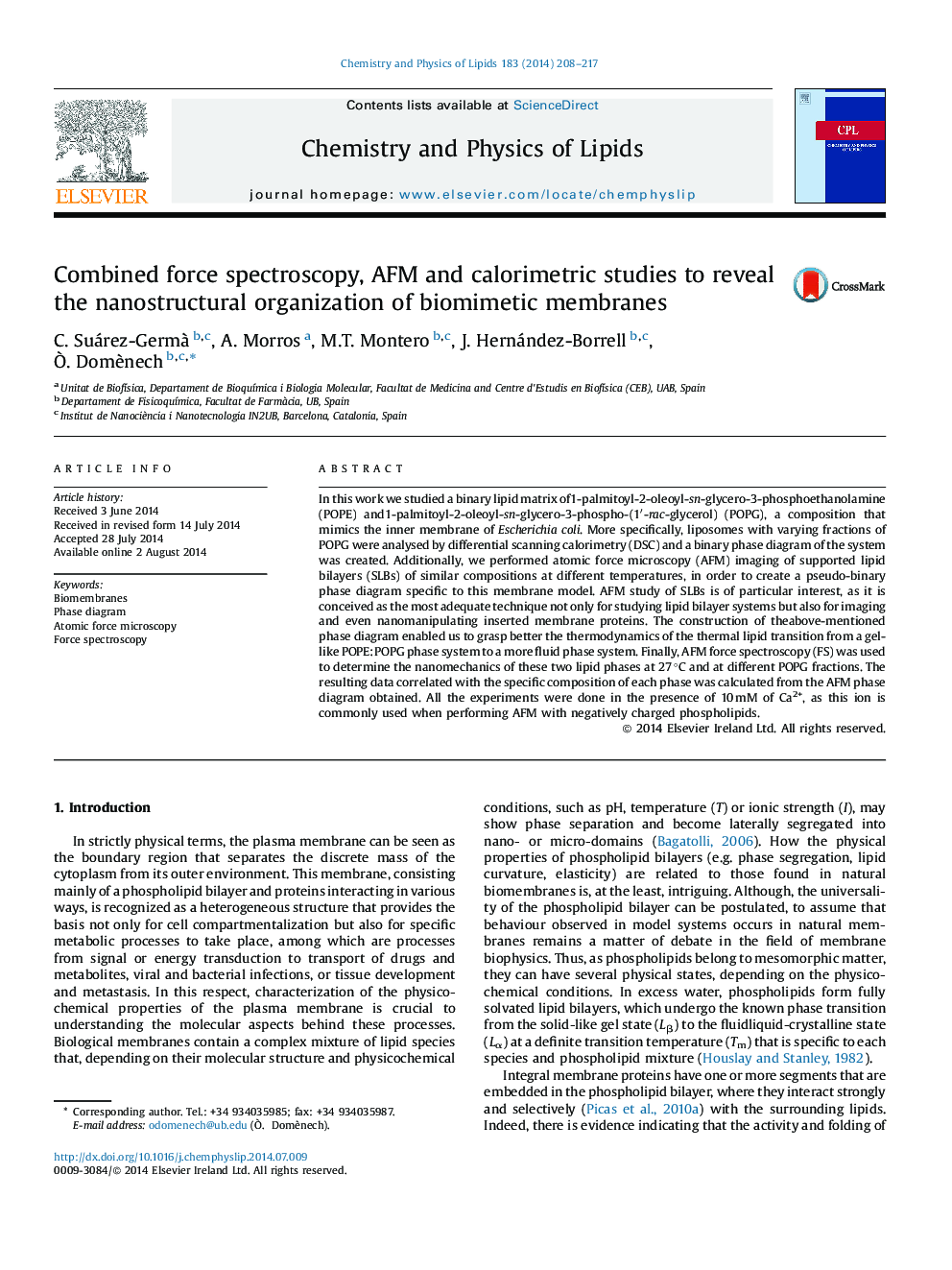| Article ID | Journal | Published Year | Pages | File Type |
|---|---|---|---|---|
| 1251765 | Chemistry and Physics of Lipids | 2014 | 10 Pages |
•AFM and DSC phase diagrams were obtained and compared.•Thermodynamics of POPE and POPG mixtures were analysed and observed in SLBs.•Force spectroscopy allows to differentiate the gel domains from the liquid domains when coexisting at 27 °C.
In this work we studied a binary lipid matrix of 1-palmitoyl-2-oleoyl-sn-glycero-3-phosphoethanolamine (POPE) and 1-palmitoyl-2-oleoyl-sn-glycero-3-phospho-(1′-rac-glycerol) (POPG), a composition that mimics the inner membrane of Escherichia coli. More specifically, liposomes with varying fractions of POPG were analysed by differential scanning calorimetry (DSC) and a binary phase diagram of the system was created. Additionally, we performed atomic force microscopy (AFM) imaging of supported lipid bilayers (SLBs) of similar compositions at different temperatures, in order to create a pseudo-binary phase diagram specific to this membrane model. AFM study of SLBs is of particular interest, as it is conceived as the most adequate technique not only for studying lipid bilayer systems but also for imaging and even nanomanipulating inserted membrane proteins. The construction of the above-mentioned phase diagram enabled us to grasp better the thermodynamics of the thermal lipid transition from a gel-like POPE:POPG phase system to a more fluid phase system. Finally, AFM force spectroscopy (FS) was used to determine the nanomechanics of these two lipid phases at 27 °C and at different POPG fractions. The resulting data correlated with the specific composition of each phase was calculated from the AFM phase diagram obtained. All the experiments were done in the presence of 10 mM of Ca2+, as this ion is commonly used when performing AFM with negatively charged phospholipids.
Graphical abstractFigure optionsDownload full-size imageDownload as PowerPoint slide
